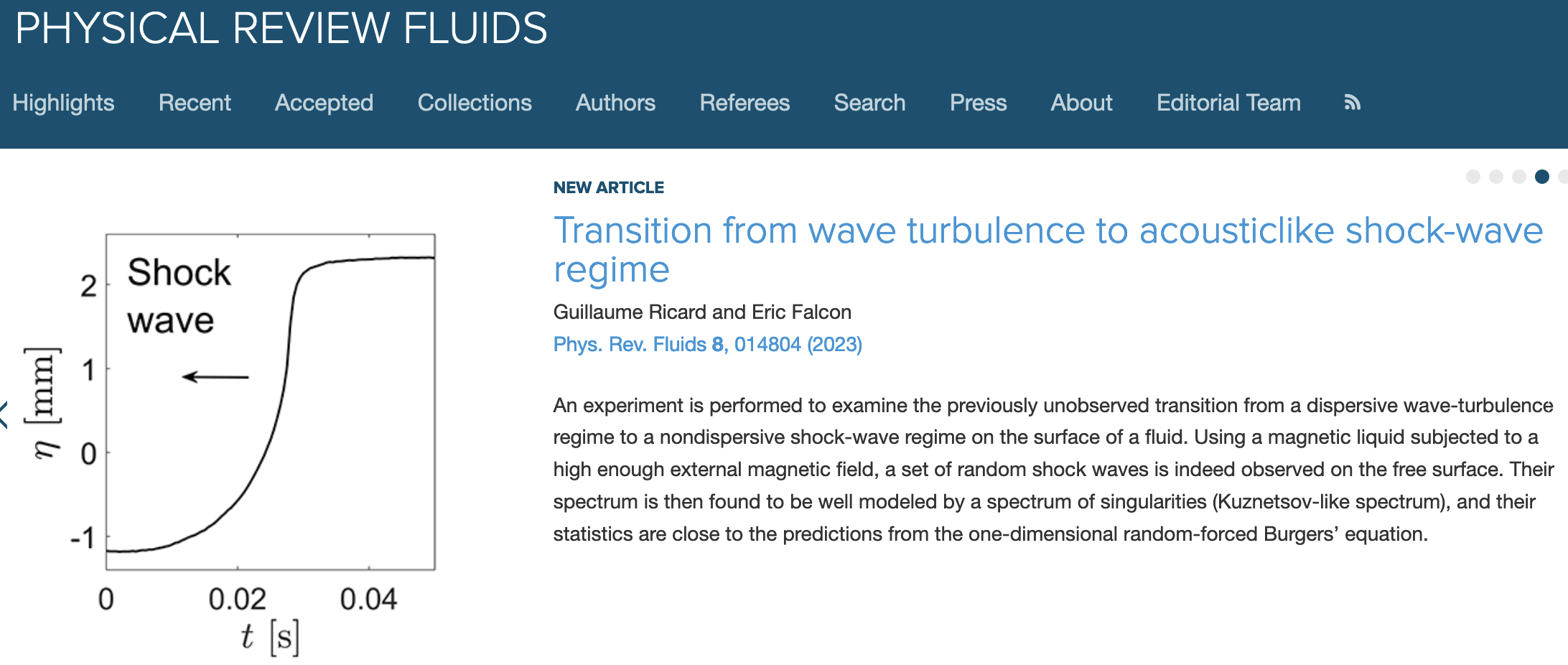
Abstract:
We report on the experimental observation of a transition from a
dispersive wave turbulence regime to a nondispersive regime
involving shock waves on the surface of a fluid. We use a
magnetic fluid in a canal subjected to an external horizontal
magnetic field to tune the dispersivity of the system. For a low
magnetic field, gravity-capillary wave turbulence is observed,
whereas for a high enough field, random steep coherent
structures arise which are found to be shock waves. These shock
waves create singularities in the second-order difference of the
surface elevation, leading to a
frequency power spectrum. This spectrum is also found to be
controlled by the number and amplitude of the shocks and is well
captured by a model based on a random Dirac-delta distribution
(Kuznetsov-like spectrum). Finally, the shock-amplitude
statistics exhibits a power-law distribution with an exponent
close to the predictions of 1D random-forced Burgers equation.
To our knowledge this shock-wave regime has not previously been
examined for surface waves and paves the way to better explore
their properties.